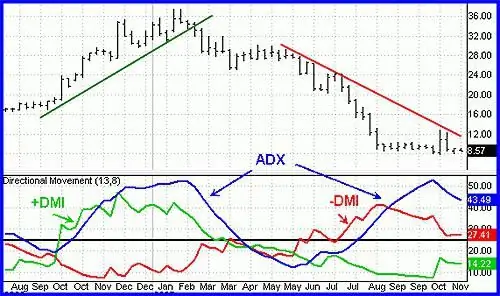2025 Author: Howard Calhoun | [email protected]. Last modified: 2025-06-01 07:12:56
Carbon black (GOST 7885-86) is a type of industrial carbon products used mainly in the production of rubber as a filler that enhances its useful performance properties. Unlike coke and pitch, it consists of almost one carbon, it looks like soot.

Scope of application
Approximately 70% of the produced carbon black is used for the manufacture of tires, 20% - for the production of rubber products. Also, technical carbon is used in paint and varnish production and printing inks, where it acts as a black pigment.
Another area of application is the production of plastics and cable sheaths. Here the product is added as a filler and giving products special properties. Carbon black is also used in small quantities in other industries.

Characteristic
Carbon black is the product of a process that incorporates the latest engineering and control techniques. Due to its purity and strictly defined setphysical and chemical properties, it has nothing to do with the soot produced as a polluted by-product from the burning of coal and fuel oil, or from the operation of unregulated internal combustion engines. According to the generally accepted international classification, carbon black is designated Carbon Black (black carbon translated from English), soot in English is soot. That is, these concepts are currently not mixed in any way.
The effect of reinforcement due to the filling of rubbers with carbon black was no less important for the development of the rubber industry than the discovery of the phenomenon of vulcanization of rubber with sulfur. In rubber compounds, carbon from a large number of ingredients used by weight takes the second place after rubber. The influence of the quality indicators of carbon black on the properties of rubber products is much greater than the quality indicators of the main ingredient - rubber.
Reinforcing properties
Improving the physical properties of a material by introducing a filler is called reinforcement (reinforcement), and such fillers are called amplifiers (carbon black, precipitated silicon oxide). Among all amplifiers, technical carbon has truly unique characteristics. Even before vulcanization, it binds to rubber, and this mixture cannot be completely separated into carbon black and rubber with solvents.
The strength of rubbers based on the most important elastomers:
| Elastomer | Tensile strength, MPa | |
| Unfilled vulcanizate | Vulcanizate filled with carbon black | |
| Styrene Butadiene Rubber | 3, 5 | 24, 6 |
| NBR | 4, 9 | 28, 1 |
| EPDM | 3, 5 | 21, 1 |
| Polyacrylate rubber | 2, 1 | 17, 6 |
| Polybutadiene rubber | 5, 6 | 21, 1 |
The table shows the properties of vulcanizates obtained from various types of rubber without filling and filled with carbon black. From the data presented, it can be seen how significantly carbon filling affects the tensile strength of rubber. By the way, other dispersed powders used in rubber compounds to give the desired color or reduce the cost of the mixture - chalk, kaolin, talc, iron oxide and others do not have reinforcing properties.

Structure
Pure natural carbons are diamonds and graphite. They have a crystalline structure that differs significantly from one another. The similarity in the structure of natural graphite and artificial material carbon black was established by X-ray diffraction. The carbon atoms in graphite form large layers of condensed aromatic ring systems, with an interatomic distance of 0.142 nm. These graphite layerscondensed aromatic systems are commonly called basal planes. The distance between the planes is strictly defined and is 0.335 nm. All layers are parallel to each other. The density of graphite is 2.26g/cm3.
Unlike graphite, which has a three-dimensional order, technical carbon is characterized only by a two-dimensional order. It consists of well-developed graphite planes, located approximately parallel to each other, but offset with respect to adjacent layers - that is, the planes are arbitrarily oriented with respect to the normal.
The graphite structure is figuratively compared to a neatly folded deck of cards, and the carbon black structure is compared to a deck of cards in which the cards are shifted. In it, the interplanar distance is greater than that of graphite and is 0.350-0.365 nm. Therefore, the density of carbon black is lower than the density of graphite and is in the range of 1.76-1.9 g/cm3, depending on the brand (most often 1.8 g/cm 3).
Coloring
Pigmented (dyeing) grades of carbon black are used in the production of printing inks, coatings, plastics, fibers, paper and building materials. They are classified into:
- high color carbon black (HC);
- medium (MS);
- normal coloring (RC);
- low color (LC).
The third letter indicates the method of obtaining - furnace (F) or channel (C). Designation example: HCF - High Color Furnace Black (Hiqh Color Furnace).

The coloring power of a product is related to its particle size. Depending on their size, technical carbon is divided into groups:
| Average particle size, nm | Furnace black grade |
| 10-15 | HCF |
| 16-24 | MCF |
| 25-35 | RCF |
| >36 | LCF |
Classification
Technical carbon for rubber according to the degree of reinforcing effect is divided into:
- Highly reinforcing (tread, hard). It is distinguished by increased strength and resistance to abrasion. The particle size is small (18-30 nm). Used in conveyor belts, tire treads.
- Semi-reinforcing (framework, soft). The particle size is average (40-60 nm). They are used in diverse rubber products, tire carcasses.
- Low gain. The particle size is large (over 60 nm). Limited use in the tire industry. Provides the necessary strength while maintaining high elasticity in rubber products.
Complete classification of carbon black is given in ASTM D1765-03, accepted by all global product manufacturers and users. In it, the classification, in particular, is carried out according to the range of the specific surface area of particles:
| Group | Average specific areasurface by nitrogen adsorption, m2/g |
| 0 | >150 |
| 1 | 121-150 |
| 2 | 100-120 |
| 3 | 70-99 |
| 4 | 50-69 |
| 5 | 40-49 |
| 6 | 33-39 |
| 7 | 21-32 |
| 8 | 11-20 |
| 9 | 0-10 |
Production of carbon black
There are three technologies for producing industrial carbon black that use an incomplete combustion cycle of hydrocarbons:
- furnace;
- channel;
- tube;
- plasma.
There is also a thermal method that decomposes acetylene or natural gas at high temperatures.

Multiple grades produced by different technologies have different characteristics.
Production technology
Theoretically, it is possible to obtain carbon black by all of the above methods, however, more than 96% of the product produced is obtained by the furnace method from liquid raw materials. The method makes it possible to obtain various grades of carbon black with a certain set of properties. For example, the Omsk Carbon Black Plant uses this technology to produce more than 20 grades of carbon black.
The general technology is this. The reactor, lined with highly refractory materials, is fed with natural gas and air heated to 800°C. Due to the combustion of natural gas, products of complete combustion are formed with a temperature of 1820-1900 ° C, containing a certain amount of free oxygen. Liquid hydrocarbon raw materials are injected into the high-temperature products of complete combustion, thoroughly mixed beforehand and heated to 200-300 °C. The pyrolysis of raw materials takes place at a strictly controlled temperature, which, depending on the brand of produced carbon black, has different values from 1400 to 1750 ° С.
At a certain distance from the place of supply of raw materials, the thermal-oxidative reaction is stopped by the injection of water. The carbon black and reaction gases formed as a result of pyrolysis enter the air heater, in which they give off part of their heat to the air used in the process, while the temperature of the carbon-gas mixture decreases from 950-1000 °С to 500-600 °С.
After cooling to 260-280 °C due to additional water injection, the mixture of carbon black and gases is sent to the bag filter, where carbon black is separated from the gases and enters the filter hopper. The separated carbon black from the filter bin is fed by a fan (turboblower) to the granulation section through the gas pipeline.

Carbon black producers
Global production of carbon black exceeds 10 million tons. Such a great need for the product is primarily due to its unique reinforcing properties. The locomotives of the industry are:
- Aditya Birla Group (India) - about 15% of the market.
- Cabot Corporation (USA) - 14% of the market.
- Orion Engineered Carbons (Luxembourg) - 9%.
Largest Russian carbon producers:
- Omsktehuglerod LLC - 40% of the Russian market. Factories in Omsk, Volgograd, Mogilev.
- JSC Yaroslavl Technical Carbon - 32%.
- JSC Nizhnekamsktekhuglerod - 17%.
Recommended:
Carbon is Carbon: description, scope, features and reviews

Carbon is a modern material actively used in a wide variety of industries and other areas of human life. We will talk about this most interesting product in as much detail as possible in the article
Technical passport for home: how and where to make? Terms of production of a technical passport for the house

One of the main documents related to real estate is a technical passport for a house. It will be needed to carry out any transaction, and is manufactured at the BTI at the location of the facility. How much does it cost, what documents need to be collected, as well as the validity of the registration certificate and other nuances in more detail in the next material
What is carbon cloth? The application of carbon fabric in various fields of activity

What is carbon cloth? This is a material that consists of extremely light and strong fibers of a reinforced polymer. At its core, this polymer is a long chain of molecules held together by carbon atoms. Typically, the polymer used to make carbon fabric is ninety percent carbon mixed with ten percent miscellaneous additives
ADX indicator. ADX technical indicator and its features

ADX-indicator is a unique trading tool that allows you to determine the strength of a trend. It gives clear signals to traders about the time to enter and exit the market
Technical analysis of "Forex" (market). What is the summary technical analysis "Forex"

The Forex market has become very famous in Russia in a short time. What kind of exchange is this, how does it work, what mechanisms and tools does it have? The article reveals and describes the basic concepts of the Forex market

